(785) 437-2471 [email protected]
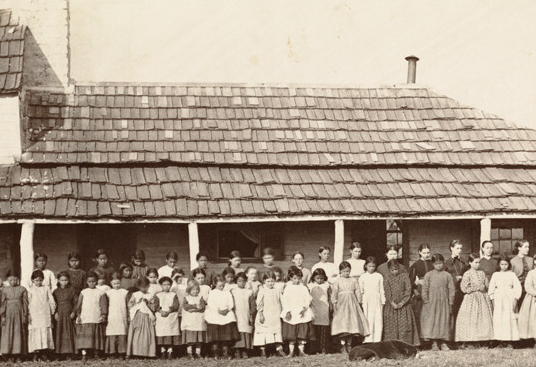
Decades before a small group of Jesuits founded St. Mary’s College, they labored as missionaries with the Potawatomi. For ten years the mission site remained at Sugar Creek in eastern Kansas. Then in 1848, a treaty forced the endeavor to a new location in the northeastern part of the state. An exploratory party from the mission, made up of Jesuits and Sisters of the Sacred Heart, chose a site nestled between the grass covered Flint Hills and the Kansas River and named it St. Mary’s. Anticipating the college’s devotion to Our Lady, the Jesuit superior in Rome encouraged this mission to “establish there solidly the devotion to the Immaculate Heart of Mary.”
The new location hugged the burgeoning Oregon Trail, and St. Mary’s quickly became a favorite stopping point for westward migrants. White settlers crowded out many of the Potawatomi, and new treaties forced many more native people to other locations. As the mission’s demographics shifted, the Jesuits also adapted. In the same year, 1869, St. Marys became a city, and the Jesuits established St. Mary’s College. Upon hearing about the new liberal arts college, Fr. Gailland, one of the dedicated missionaries, wrote with high hopes that through the patronage of “Mary Immaculate,” the college would “undoubtedly through a long succession of years be the glory of the region and the honor of the Christian people.”
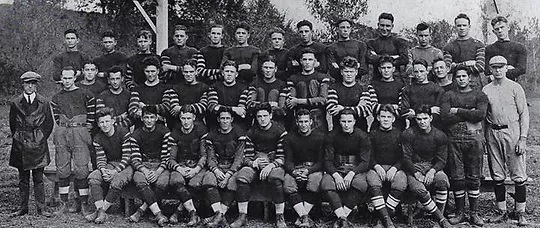
As a liberal arts school, St. Mary’s College did not seek “to train specialist[s]” but to “develop all the mental and moral faculties.” With an average enrollment of around 120 students, this small college granted bachelor’s degrees in Arts, Science, and Philosophy and soon earned a reputation for excellence in academics and athletics. The varied careers of SMC graduates reflect the versatility of a liberal arts education.
Many alumni became priests and religious, and several became bishops. One of these bishops co-founded the University of San Diego. Two alumni siblings created a car company called Graham-Paige that furnished a limousine to the Vatican used by Pope Pius XI and Pius XII. Of the many alumni veterans, one was awarded the Congressional Medal of Honor, one became adjutant general of the U.S. Army, and another was appointed a U.S. ambassador. One even became a composer and wrote the score for Alfred Hitchcock’s The Birds. Many others became doctors, lawyers, farmers, and businessmen.
Charles Comiskey, who founded the Chicago White Sox and the American League, stands out as the most well known among the alumni athletes. Several other alums played major league baseball. One became a major league scout, and one became an MLB umpire, following in the steps of a former SMC coach and athletic director, Ernest Quigley.
Some of its famous former students include Gutzon Borglum, who designed Mt. Rushmore, and Academy Award winning actor Spencer Tracy.
Amazingly, the college was nearly self-sufficient. It had an infirmary with registered nurses, a brick factory, and a fully functioning farm. It also maintained a powerhouse that heated all of the buildings on campus by pumping steam through underground tunnels.
A Symbol of Love
Many graduates maintained an intense devotion to their alma mater. For instance, Charles Comiskey frequently brought his Chicago White Sox to SMC to scrimmage its baseball team. More profoundly, the robust alumni association raised funds to build a campus church, dedicated to Our Lady, as a sign of their gratitude. Construction on the Immaculata, which quickly became the heart of the college, began in 1907 and concluded with its consecration in 1909.
Service in WWI
According to college publications, 700 alumni served in the military during the Great War. This number may include graduates from the attached boy’s high school. In 1923, the large and active college alumni association erected a Memorial Arch in front of the college in honor of these men and the 19 alumni who lost their lives, including Lt. William Fitzsimons, the first American officer killed in WWI.
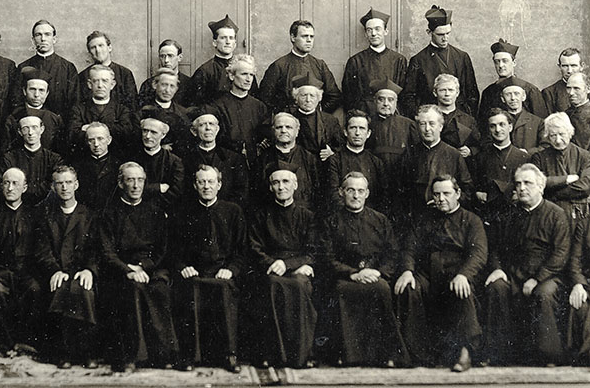
In spring 1931, St. Mary’s closed as a liberal arts college and reopened in the fall as a Jesuit theologate where seminarians from throughout the country and across the world came to finish the final two years of their fourteen-year course of study. The theologate was still known as St. Mary’s College. Local tradition plausibly maintains that 1,000 priests were ordained at the Immaculata at this time.
In 1967, the Jesuits transferred the theologate back to St. Louis, Missouri, leaving the campus empty, except for one lone brother as a caretaker. Before departure, the Jesuits auctioned the contents of the buildings.
The Jesuits placed SMC on the market, but all manner of plans fell through to repurpose the campus. Some of the proposed uses of the old buildings included an Indian cultural and educational center, a business park, and a police training center. For the most part, the historic old buildings and the beautiful grounds sat idle and slowly deteriorated.
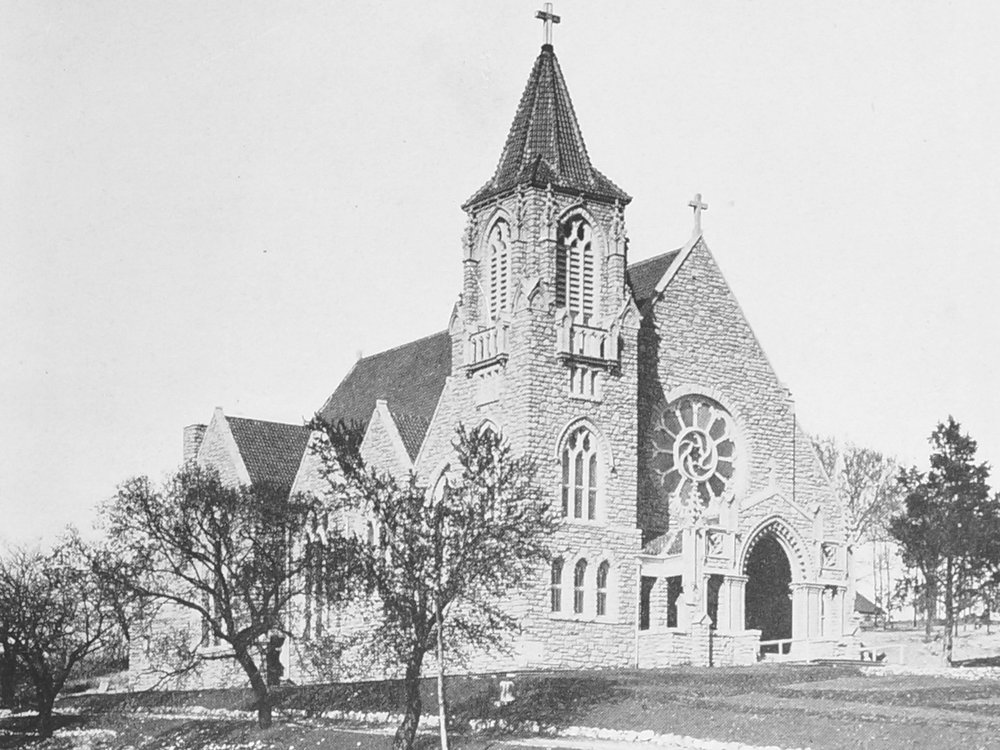
A revolution in the Church led to the rebirth of the abandoned college. The Second Vatican Council (1962–1965) inaugurated changes with devastating effects on the Church. Innovations such as the replacement of Latin with vernacular languages and Communion in the hand rather than on the tongue challenged fundamental aspects of the Faith, such as the universality of the Church and the presence of Our Lord in the Eucharist.
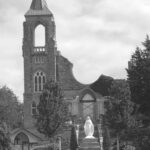
Archbishop Marcel Lefebvre organized the Society of St. Pius X (SSPX) as an order of priests dedicated to tradition in response. Impressed mainly with the college’s Immaculata Chapel, Archbishop Lefebvre agreed to purchase the old campus in 1978. Shockingly, the Immaculata caught fire shortly thereafter. Only the exterior walls of the Church remained standing, for decades, as efforts to rebuild faltered.
That same year, the SSPX started a grade school at St. Mary’s but soon realized that its college bound graduates needed a place where they could pursue the truth without compromise. So, in 1981 the SSPX re-opened St. Mary’s College as a traditional Catholic liberal arts school, only now as a coed institution. The first graduating class—of 1984—numbered only three but heralded the first female ever to graduate from SMC.
Initially, the college offered a four-year degree, but without approval from the state. The administration dropped the four-year degree and focused solely on the two-year associate’s degree, which SMC offered until Spring 2023.
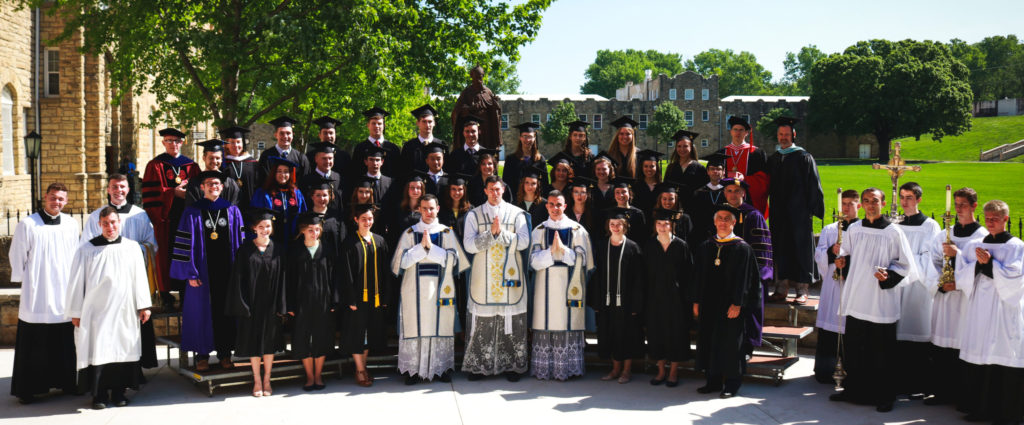
Today, the college has students from all over the nation and some from different countries. In July 2021, the KBOR approved a new four-year baccalaureate degree in the liberal arts. The first class in the four-year program will graduate in Spring 2026.
For decades, the community sought to restore the old Immaculata, but to no avail. With the parish growing rapidly, the SSPX decided to build a new Immaculata in a different location. Consecrated in May 2023, the Immaculata stands as the largest Catholic Church in Kansas and carries on the spirit of the venerable one built by SMC alumni. For more information on the Immaculata, visit: the New Immaculata.
– by Dr. Daniel Gresham
